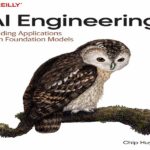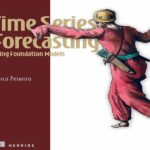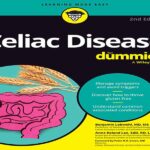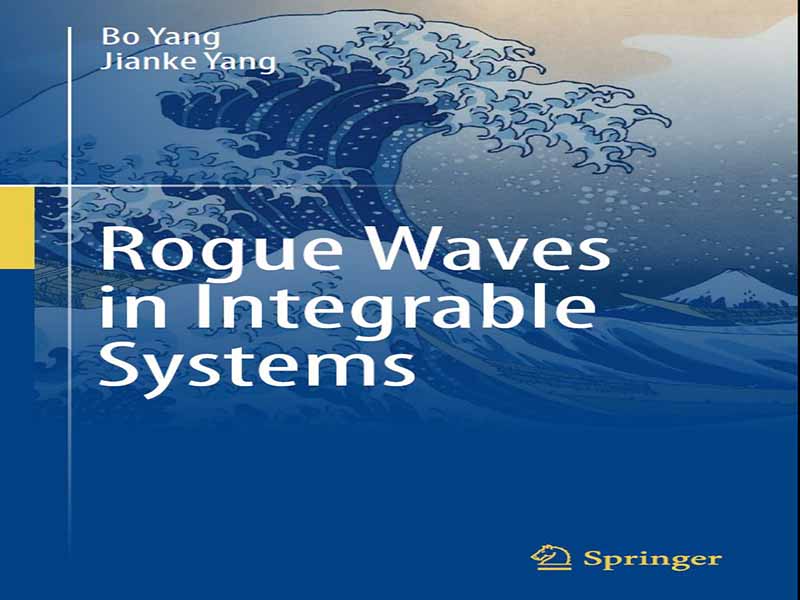- عنوان کتاب: Rogue Waves in Integrable Systems
- نویسنده: Bo Yang, Jianke Yang
- حوزه: انتگرال
- سال انتشار: 2024
- تعداد صفحه: 424
- زبان اصلی: انگلیسی
- نوع فایل: pdf
- حجم فایل: 5.44 مگابایت
امواج سرکش، که با نامهای امواج عجیب، امواج هیولا، امواج قاتل، امواج شدید و امواج غیرطبیعی نیز شناخته میشوند، امواج سطحی غیرمعمول بزرگ و ناگهانی در دریا هستند (Dysthe و همکاران، ۲۰۰۸؛ Kharif و همکاران، ۲۰۰۹). از آنجایی که آنها بدون هشدار ظاهر و ناپدید میشوند، میتوانند برای کشتیها، حتی کشتیهای بزرگ، خطرناک باشند. چاپ معروف ژاپنی، موج بزرگ کاناگاوا، اثر کاتسوشیکا هوکوسای (به جلد این کتاب مراجعه کنید) را میتوان به عنوان یک تصویر هنری از یک موج سرکش در نظر گرفت. در قدیم، ملوانان اغلب در مورد امواج سرکشی که در دریا میدیدند صحبت میکردند، اما چنین داستانهایی اغلب به عنوان اسطوره یا فولکلور رد میشدند. اولین اندازهگیری تأیید شده از یک موج سرکش در ۱ ژانویه ۱۹۹۵، روی سکوی دراپنر در دریای شمال بود، جایی که موجی ۲۵.۶ متری مشاهده شد – بسیار بزرگتر از میدان موج پسزمینه. متعاقباً، رویدادهای موج سرکش در مخازن آب مشاهده شدهاند، بنابراین امکان درک بهتر مکانیسمهای فیزیکی آنها فراهم شده است. اگرچه ممکن است مکانیسمهای متعددی برای ظهور امواج سرکش وجود داشته باشد، یکی از آنها ناپایداری مدولاسیون است که ناپایداری بنجامین-فیر نیز نامیده میشود، که در آن یک قطار موج غیرخطی یکنواخت (قطار موج استوکس) ناپایدار است. هنگامی که این قطار موج استوکس میشکند، اگر اختلال ناپایداری به درستی ایجاد شود، میتواند امواج سرکش ایجاد کند. مطالعه امواج سرکش از اقیانوسشناسی به سایر شاخههای فیزیک مانند اپتیک غیرخطی، پلاسما و چگالش بوز-اینشتین (BEC) گسترش یافته است، زیرا مدل ریاضی امواج سطحی یک بعدی در اقیانوس – معادله غیرخطی شرودینگر (NLS)، پدیدههای موج را در آن سیستمهای دیگر نیز کنترل میکند. معادله NLS راهحلهای منطقی صریحی را میپذیرد که رفتارهای شبیه موج سرکش را نشان میدهند، که دلیل ریاضی اساسی برای ظهور امواج آب سرکش در آزمایشهای آزمایشگاهی و احتمالاً در اقیانوس نیز هست. از آنجایی که معادله NLS آن سیستمهای فیزیکی دیگر را نیز کنترل میکند، انتظار میرود امواج سرکش نوری، امواج سرکش پلاسما و امواج سرکش BEC وجود داشته باشند. در واقع، چنین امواج سرکش در آزمایشگاههای اپتیک، پلاسما و BEC مشاهده شدهاند و در نتیجه وقوع امواج سرکش را در دنیای طبیعی گسترش میدهند. باید توجه داشت که محیطهای فیزیکی دیگری نیز وجود دارند که در آنها رفتارهای موج نه توسط معادله NLS، بلکه توسط معادلات مدل دیگری مانند سیستم ماناکوف و سیستم برهمکنش رزونانس سه موجی کنترل میشوند. چنین معادلات مدلی به دلیل ناپایداری مدولاسیون یک موج پسزمینه یکنواخت، راهحلهای موج سرکش را نیز میپذیرند. سپس، میتوان انتظار داشت که رویدادهای سرکش در سیستمهای فیزیکی متنوعتری نیز رخ دهند. امواج سرکش را میتوان هم به صورت تجربی و هم به صورت نظری مطالعه کرد. در رویکرد نظری، میتوان راهحلهای موج سرکش را در مدلهای ریاضی مرتبط با فیزیک استخراج و تحلیل کرد تا به بینشی در مورد خواص رویدادهای سرکش دست یافت. آنچه این رویکرد نظری را ممکن میسازد این است که بسیاری از مدلهای ریاضی مرتبط با فیزیک، مانند معادله NLS، سیستم ماناکوف، سیستم برهمکنش رزونانس سه موجی و سیستم برهمکنش رزونانس موج بلند-موج کوتاه، همگی انتگرالپذیر هستند، به این معنی که میتوان آنها را به صورت تحلیلی حل کرد. با توجه به انتگرالپذیری آنها، ما قادر به استخراج جوابهای صریح موج سرکش در آن سیستمها هستیم که اطلاعات کمی دقیقی در مورد دینامیک موج سرکش در اختیار ما قرار میدهد. علاوه بر این، به دلیل صراحت این جوابهای موج سرکش، ما قادر به انجام تحلیلهای مجانبی مختلف روی این جوابها هستیم که منجر به پیشبینیهای مجانبی الگوهای موج سرکش بسیار جذاب میشود. این الگوهای سرکش ارتباط نزدیکی با ساختارهای ریشهای چندجملهایهای خاص خاص، مانند سلسله مراتب چندجملهای یابلونسکی-وروبف، سلسله مراتب چندجملهای اوکاموتو و چندجملهایهای آدلر-موزر، دارند. این ارتباط زیبا بین الگوهای سرکش و چندجملهایهای خاص، گواهی بر ساختار غنی امواج سرکش در سیستمهای انتگرالپذیر است. این کتاب وضعیت فعلی دانش در مورد امواج سرکش در سیستمهای انتگرالپذیر مهم از نظر فیزیکی را خلاصه میکند. فصل اول بسیاری از این سیستمهای انتگرالپذیر را در محیطهای فیزیکی مانند امواج آب، اپتیک و پلاسما استخراج میکند. این فصل انگیزههای فیزیکی را برای مطالعات ریاضی ما در فصلهای بعدی فراهم میکند. فصل دوم، جوابهای موج سرکش را در طیف وسیعی از سیستمهای انتگرالپذیر، از جمله آنهایی که در فصل ۱ و بسیار فراتر از آن به دست آمدهاند، استخراج میکند. در مقالات، امواج سرکش در بسیاری از آن سیستمهای انتگرالپذیر در ابتدا توسط تبدیل داربو تعمیمیافته استخراج شدهاند. ما این امواج سرکش را تقریباً منحصراً با روش دوخطی استخراج خواهیم کرد، زیرا عبارات موج سرکش با روش دوخطی بسیار صریحتر از عبارات با تبدیل داربو هستند. فصل سوم، الگوهای امواج سرکش را در محدودههای مجانبی خاص مانند پارامترهای داخلی بزرگ تجزیه و تحلیل میکند. ارتباطات بین الگوهای سرکش و ساختارهای ریشهای چندجملهایهای خاص آشکار خواهد شد و جهانی بودن این الگوهای سرکش در سیستمهای انتگرالپذیر اثبات خواهد شد. فصل چهارم، آزمایشگاه را شرح میدهد.
Rogue waves, also known as freak waves, monster waves, killer waves, extreme waves, and abnormal waves, are unusually large and suddenly appearing surface waves in the sea (Dysthe et al. 2008; Kharif et al. 2009). Since they appear and disappear without warning, they can be dangerous to ships, even to large ones. The famous Japanese print, The Great Wave Of Kanagawa, by Katsushika Hokusai (see cover of this book) can be viewed as an artistic rendering of a rogue wave. In the old days, sailors often talked about rogue waves that they saw in the sea, but such stories were often dismissed as myths or folklore. The first verified measurement of a rogue wave was on January 1, 1995, on the Draupner platform in the North Sea, where a 25.6 m wave was observed—much larger than the background wave field. Subsequently, rogue wave events have been observed in water tanks, thus allowing their physical mechanisms to be better understood. While there could be multiple mechanisms for the appearance of rogue waves, one of them is modulation instability, also called Benjamin-Feir instability, where a uniform nonlinear wavetrain (Stokes wavetrain) is unstable. When this Stokes wavetrain breaks up, it could generate rogue waves if the instability perturbation is seeded properly. The study of rogue waves has spread from oceanography to other branches of physics such as nonlinear optics, plasma and Bose-Einstein condensates (BEC) because the mathematical model for one-dimensional surface waves in the ocean— the nonlinear Schrödinger (NLS) equation, also governs wave phenomena in those other systems. The NLS equation admits explicit rational solutions that exhibit rogue-wave-like behaviors, which is the underlying mathematical reason for the appearance of rogue water waves in laboratory experiments and possibly in the ocean as well. Since the NLS equation also governs those other physical systems, optical rogue waves, plasma rogue waves, and BEC rogue waves would be expected. Indeed, such rogue waves have been observed in laboratories of optics, plasma, and BEC, thus widening rogue occurrences in the natural world. It should be recognized that there are also other physical settings where wave behaviors are governed not by the NLS equation but by other model equations such as the Manakov system and the three-wave resonant interaction system. Such model equations turn out to admit rogue wave solutions as well, due to modulation instability of a uniform background wave. Then, rogue events can be expected in even more diverse physical systems. Rogue waves can be studied both experimentally and theoretically. In the theoretical approach, one can derive and analyze rogue wave solutions in physically relevant mathematical models in order to gain insight into properties of rogue events. What makes this theoretical treatment possible is that, many physically relevant mathematical models, such as the NLS equation, the Manakov system, the three-wave resonant interaction system, and the long-wave-short-wave resonant interaction system, are all integrable, meaning that they can be solved analytically. Due to their integrability, we are able to derive explicit rogue wave solutions in those systems, which provide us with detailed quantitative information on rogue wave dynamics. In addition, due to the explicitness of these rogue wave solutions, we are able to perform various asymptotic analysis on these solutions, which results in asymptotic predictions of very fascinating rogue wave patterns. These rogue patterns turn out to be closely related to root structures of certain special polynomials, such as the Yablonskii-Vorob’ev polynomial hierarchy, the Okamoto polynomial hierarchies, and Adler-Moser polynomials. This beautiful connection between rogue patterns and special polynomials is a testament of the rich structure of rogue waves in integrable systems. This book summarizes the current state of knowledge on rogue waves in physically important integrable systems. The first chapter derives many of these integrable systems in physical settings such as water waves, optics, and plasma. This chapter provides physical motivations for our mathematical studies in later chapters. The second chapter derives rogue wave solutions in a wide array of integrable systems, including those obtained in Chap. 1 and much beyond. In the literature, rogue waves in many of those integrable systems were originally derived by generalized Darboux transformation. We will derive these rogue waves almost exclusively by the bilinear method, since rogue wave expressions by the bilinear method are much more explicit than those by Darboux transformation. The third chapter analyzes patterns of rogue waves in certain asymptotic limits such as large internal parameters. Connections between rogue patterns and root structures of special polynomials will be revealed, and universality of these rogue patterns in integrable systems will be established. The fourth chapter describes laboratory experiments on rogue waves in physical settings such as optical fibers, water tanks, plasma, and BEC. The last chapter covers topics that are closely related to rogue waves of the earlier chapters, such as rogue waves arising from a nonuniform background, robustness of rogue waves, partial-rogue waves, and lump patterns in the Kadomtsev-Petviashvili I equation. This book is intended as a monograph on the theoretical treatments of rogue waves. Its intended readership is researchers and graduate students in diverse mathematical and physical fields, where rogue waves are an interest of study. Most derivations are self-contained, and the reader should be able to follow them without much help from other sources.
این کتاب را میتوانید از لینک زیر بصورت رایگان دانلود کنید:
Download: Rogue Waves in Integrable Systems



































نظرات کاربران